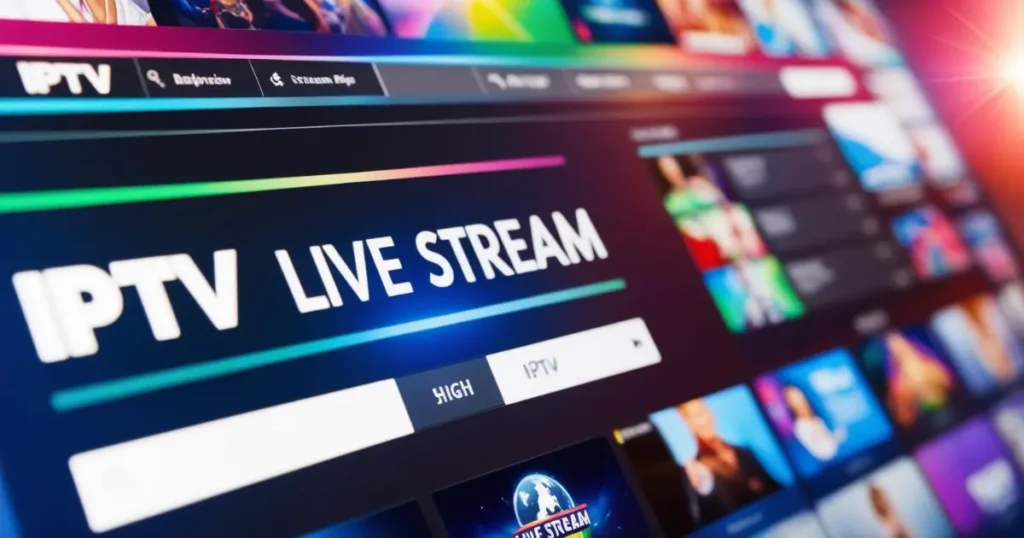Starting your live streaming journey? Timing is everything. The right time can boost your viewers and earnings. Your schedule is key to success. Knowing the best hours can grow your audience.
Timing depends on your audience, content, and platform. Plan well to reach more people. Success on YouTube, Twitch, or Facebook starts with the right timing. Master it to grow your fan base.
Introduction to Live Stream Timing
Getting your timing right is crucial. Think about your audience, content, and platform. A good schedule boosts engagement and earnings. We’ll explore how to make your timing work best.
Key Takeaways
- Optimizing live stream timing is crucial for maximizing audience engagement and revenue
- Understanding your target audience, content type, and platform is essential for creating a successful live streaming schedule
- A well-planned live streaming schedule can help you increase your online presence and reach a broader audience
- Live stream timing affects your streaming performance on platforms like YouTube, Twitch, and Facebook
- Mastering live stream timing can help you build a loyal following and take your streaming to the next level
- Creating a live streaming schedule requires considering factors like live stream timing, content type, and audience preferences
- Optimizing your live stream timing can help you achieve your streaming goals and increase your revenue
Understanding Live Streaming Peak Hours
When planning your live stream, knowing the peak hours is key. Peak hours are when your audience is most active and watching. Finding these times helps you reach more people and boost engagement.
Consider the difference between morning and evening streams. Morning streams work well for those getting ready for work or school. Evening streams are perfect for those unwinding after a long day.
Morning vs Evening Streams
Morning streams do well during the week. Evening streams shine on weekends. People have more free time on weekends and prefer evening streams.
Weekend vs Weekday Performance
Weekends are great for reaching a wider audience, but weekdays are better for niche topics. Experimenting with different times helps find what your audience likes best.
Holiday Streaming Considerations
Holidays change how people watch live streams. For example, Christmas or New Year’s might see more evening viewers. Thanksgiving might see more daytime viewers.
| Day | Peak Hours |
|---|---|
| Monday | 12pm-2pm EST |
| Tuesday | 2pm-4pm EST |
| Wednesday | 12pm-2pm EST |
| Thursday | 2pm-4pm EST |
| Friday | 12pm-2pm EST |
| Saturday | 8pm-10pm EST |
| Sunday | 8pm-10pm EST |
How Your Target Audience Affects Your Stream Schedule
Creating a live streaming schedule means thinking about your audience. You need to know what they like, when they watch, and where they are. Your live streaming schedule should aim to engage as many viewers as possible.
To find out who your audience is, look at who’s watching you now. Think about their age, where they live, and what they’re into. For example, if most of your viewers are students, stream in the evenings when they’re free. The ideal live stream duration will depend on how long your viewers can watch.
When planning your stream schedule, keep these points in mind:
- Time zone: Stream at times that are convenient for your target audience’s time zone.
- Day of the week: Stream on days when your audience is most active, such as weekends or weekdays.
- Content type: Adjust your stream schedule based on the type of content you’re streaming, such as gaming or educational content.
Understanding your audience and adjusting your live streaming schedule can boost engagement. It helps you build a loyal fan base and reach your streaming goals. Always keep an eye on what your audience likes and change your schedule if needed. This way, you’ll make sure your streams are the right length for your viewers.
Platform-Specific Best Times for Live Streaming
Knowing the best times to live stream on different platforms is key to reaching more people. Each platform has its own special times when more people are online. By picking the right time, you can get more viewers.
Twitch is best from 5 pm to 12 am EST, when gamers are most active. YouTube Live does well on weekdays from 12 pm to 4 pm EST. Facebook Live is best from 12 pm to 3 pm EST, and Instagram Live shines from 5 pm to 7 pm EST.
Here’s a quick guide to help plan your live streams:
- Twitch: 5 pm – 12 am EST (prime time hours)
- YouTube: 12 pm – 4 pm EST (optimal scheduling)
- Facebook: 12 pm – 3 pm EST (peak engagement times)
- Instagram: 5 pm – 7 pm EST (best performance hours)
By picking the right times for each platform, you can attract more viewers. This way, your live streams can reach their full potential.
| Platform | Best Time for Live Streaming |
|---|---|
| Twitch | 5 pm – 12 am EST |
| YouTube | 12 pm – 4 pm EST |
| 12 pm – 3 pm EST | |
| 5 pm – 7 pm EST |
When Is The Best Time To Live Stream Based On Content Type
When planning your live stream, think about the content you’re sharing. Different content types draw in different viewers. Knowing this can help you pick the best time to stream. For example, gamers should stream when their fans are most online and ready to watch.
Your best live stream time depends on your content. To get more viewers and engagement, consider these tips based on content type:
Gaming Stream Schedules
Gamers usually tune in late in the day or at night. Streaming then can help you reach more people. Try streaming from 6 pm to 12 am to catch gamers after school or work.
Education and Business Content
For educational stuff like webinars, stream during the day. Business talks might do better in the morning or early afternoon. This is when professionals are likely to be free.
By matching your content with the right live stream time, you can attract more viewers. Don’t be afraid to try different times and see what works best for your content.
Time Zone Strategies for Global Audiences
When planning a live stream schedule, think about your audience’s time zones. This ensures you reach viewers worldwide and boost engagement. To optimize your timing, schedule streams during peak hours or use platforms that consider time zones.
Platforms like YouTube Live and Twitch offer tools for managing time zones. You can also use world clock websites or apps to find the best streaming times. By considering these factors, you can create a schedule that works for both you and your viewers.
Here are some tips for better live stream timing:
- Identify your target audience’s time zone and schedule streams during their peak hours
- Use time zone-friendly platforms that allow you to schedule streams in advance
- Consider streaming during overlapping peak hours to reach a broader audience
- Use analytics tools to track your stream’s performance and adjust your schedule accordingly
By following these tips and thinking about your audience’s time zones, you can make your live streams more engaging. Always review and adjust your schedule to keep it effective for your global audience.
| Time Zone | Peak Hours for Live Stream |
|---|---|
| Eastern Time Zone (ET) | 12pm – 4pm ET |
| Central Time Zone (CT) | 11am – 3pm CT |
| Pacific Time Zone (PT) | 10am – 2pm PT |
Building a Consistent Streaming Schedule
To have a strong online presence, it’s key to have a regular live streaming schedule. This lets your viewers know when to catch your shows. It helps them plan and watch your streams more often.
Think about how long you want your streams to be. Shorter ones might fit some content better, while longer ones offer deeper talks. Finding the right length keeps your viewers interested without feeling too much.
Your schedule should also change with your audience’s tastes and viewing times.
Creating Your Stream Calendar
A stream calendar is a must for organizing your live streams. It lets you see your streaming plan clearly. This way, you can plan your streams ahead and get your viewers excited.
Managing Multiple Time Slots
Streaming on different platforms or for a global audience can be tough. But, with a smart plan, you can reach more people. Try streaming at various times to reach different zones. Use analytics to see which times work best for your content.
Adapting to Analytics
Analytics are crucial for improving your streaming schedule. They help you see what works and what doesn’t. Use this info to tweak your schedule, trying out different times and lengths to please your audience.
Duration Optimization for Different Stream Types
When planning live streams, knowing your audience and content is key. The best time for live streaming changes with the type of content. For instance, gaming streams might be shorter and quicker, while educational content needs more time.
To find the right length for your live streams, think about these points:
- Content type: Different content types hold attention for varying lengths. Gaming streams can be brief, while educational or business talks need more time.
- Audience engagement: Watch when your viewers are most active. If engagement drops after a while, it’s time to end your stream.
- Stream frequency: Streaming often? Shorter streams can keep your audience interested and coming back.
Optimizing your live stream’s duration can boost engagement and keep viewers coming back. Try out different lengths and see how your audience reacts. This will help you find the best time for live streaming that suits you.
| Stream Type | Optimal Duration |
|---|---|
| Gaming | 30-60 minutes |
| Education | 60-90 minutes |
| Business | 30-60 minutes |
By considering these factors and trying out different lengths, you can find the perfect timing for your live streams. This will keep your audience engaged and interested.
Analyzing Your Stream Analytics to Find Your Perfect Time
To make your live streaming better, you need to look at your analytics. This helps you find the best times to stream and see how people watch your content. By checking important numbers, you can make your streaming times better to get more viewers and interaction.
When you check your analytics, think about who watches your streams, how they interact, and what devices they use. This info lets you plan your streams to fit what your viewers like. For example, if most of your viewers tune in at night, you can stream then to catch them at their best time.
Key Metrics to Monitor
- Viewer count and engagement metrics, such as likes, comments, and shares
- Device usage and platform preferences
- Geographic location and time zone distribution of your audience
By watching these numbers and adjusting your stream times, you can reach more people and get more interaction. Always check your analytics to spot trends and make smart choices for your streaming schedule.
Tools for Tracking Performance
Use tools from your streaming platform, like YouTube Analytics or Twitch Insights, to see how you’re doing. These tools give you insights into your viewers and help you improve your streaming schedule for better results.
Seasonal Changes in Streaming Patterns
When planning your live stream timing, remember the seasonal changes in streaming patterns. Your audience’s viewing habits change with the seasons. For example, in summer, people have more free time and watch live streams more. In winter, they prefer watching from home.
To adjust your live stream timing, consider these factors:
- Summer vs winter viewing habits: Summer is a good time for live streaming because people are on vacation. Winter might see fewer viewers due to holidays and cold weather.
- Holiday season adjustments: The holiday season can be tough for live streaming. People’s schedules and viewing habits change. You might need to adjust your timing to reach your audience.
By understanding these seasonal changes, you can adjust your live stream timing. This way, you can reach your audience when they’re most likely to watch. This will help you get more viewers and engagement, making your live streaming more successful.
Live streaming is all about adapting to your audience’s needs and preferences. By taking into account seasonal changes in streaming patterns, you can refine your live stream timing and create a more effective streaming schedule.
The key to success is finding the best time for live streaming for your audience. By considering seasonal changes and adjusting your timing, you can make sure your content reaches and resonates with your target audience.
Testing and Optimizing Your Stream Schedule
To make your live streams better, you need to test and tweak your schedule. Try out different times to see what works best for your viewers. This way, you can figure out the best length for your streams.
When you’re testing your schedule, keep these tips in mind:
- Start by streaming at different times of the day to see when your audience is most active
- Experiment with various live stream durations to find the ideal length for your content
- Use analytics tools to track your performance and identify areas for improvement
By fine-tuning your schedule, you can boost your online presence. This will help you attract more viewers and keep them engaged. Always check and update your schedule to match what your audience likes. This will help you create a more engaging streaming experience.
Conclusion: Mastering Your Live Stream Timing Strategy
Discovering the best time to live stream is key to engaging your audience and boosting viewership. By knowing your audience, following platform tips, and testing your schedule, you can get it right. Remember, what works today might not tomorrow, so be ready to change your plan as needed.
The best time for live streaming is what works best for your community. Keep an eye on your live stream analytics to make smart choices. With a good timing strategy, you’ll grow your live streaming presence and wow your audience.
FAQ
When is the best time to live stream?
The best time to live stream changes based on your audience, content, and platform. By choosing the right time, you can get more viewers and engagement.
What are the peak hours for live streaming?
Peak hours for live streaming vary by platform and audience. Morning and evening streams often do better than mid-day. Weekends usually have more viewers than weekdays. Holidays and seasons also affect your performance.
How does my target audience affect my live streaming schedule?
Knowing your audience is key to picking the best streaming time. Think about their age, location, and when they watch to schedule your streams for maximum engagement.
What are the best times to live stream on different platforms?
The best times for live streaming differ on each platform. For example, Twitch is best in the evening, while YouTube Live and Facebook Live work better during the day. Knowing each platform’s unique times can help you plan your streams.
When is the best time to live stream based on content type?
The best streaming time also depends on your content. Gaming, education, and business streams might work better at different times. Try different schedules to find what works best for your content.
How important is time zone strategy for global audiences?
Time zone strategy is crucial for streaming to a global audience. Plan your schedule to reach viewers worldwide and make sure your streams are available to everyone.
How do I build a consistent streaming schedule?
Consistency is essential for live streaming. Use a stream calendar, manage different times, and adjust based on analytics to create a reliable streaming routine.
How do I optimize the duration of my live streams?
The ideal stream length varies by content. Consider your audience’s attention span and platform best practices to find the best length for your streams.
How can I analyze my stream analytics to find the perfect time?
Analyzing your stream analytics is key to finding the best time. Use tools to track viewership, engagement, and drop-off rates. This helps you optimize your schedule over time.
How do seasonal changes affect streaming patterns?
Seasonal changes and holidays impact viewer behavior. Adjust your streaming times to match these changes and keep your content engaging all year.
How do I test and optimize my stream schedule?
Testing and optimizing your stream schedule is vital. Try different times and analyze results to refine your strategy. This helps you find the perfect streaming time.




Pingback: Best Kodi Builds — Extreme Iptv
Pingback: Free Sports Streaming Sites — Extreme Iptv